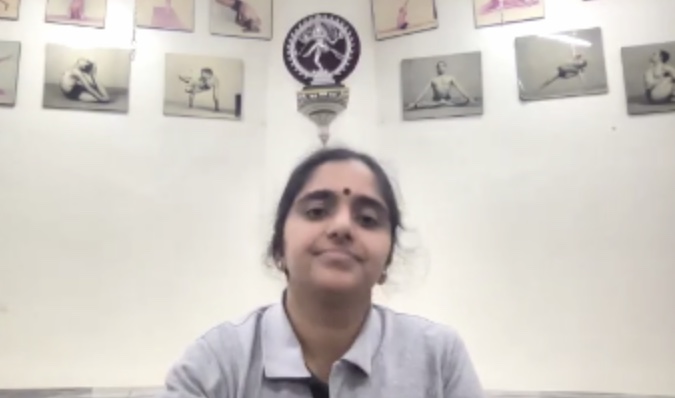Time and Tenacity

On our second day of celebration with Abhijata Iyengar, she reminded us that as Iyengar Yoga practitioners we follow a “typical practice cycle” through time – whether it be a month or a workshop – of Standing Poses, Forward Extensions, Back arches, and then Restoratives in order to cover all the aspects of asana. However, to practice standing postures “continuously regular instead of just irregularly regular” is most important as they touch on all aspects of our physical self at one time and can be approached by all levels of practitioner at any time.
And time has a lot to do with how we approach and practice yoga. As I mentioned in my writing yesterday, the role and aspect of the “guru” and tradition changes over time. It is not that the person or tradition itself is discarded or seen as ineffective or unnecessary, but how we live in it, recognize it, and are willing to change within it over time is the key. Guruji himself was considered crazy and out of line for his teaching larger groups in the time where yoga was for not for the masses, but for the chosen individual from teacher to student. And his more intense approach to teaching worked culturally and societally at that time, but copy-catted today would not be useful. Yoga itself is timeless. The concepts within The Yoga Sutras of Patanjali refer to all humans no matter when, who, where, and regardless of status. However, to “do” the same thing or “be” the same person over time is incorrect and actually quite impossible if we are truthful. Context matters in all cases, all actions, and within all postures.
As BKS Iyengar encouraged, we must “cultivate our discrimination” and “be aware in every moment to take the appropriate actions needed at any one moment in time”. Sensitivity to time, place, and ability in our practice is a must, and as the Yamas (moral precepts) suggest, honesty is utmost. To underdo when you are able is an incorrect approach. “If you ‘can’ do, you must try to do”. But to overdo just by sheer will is also not a correct approach. Yes, pain happens. Life itself is full of unpredictable pain, but yoga is full of predictable and controllable pain that can be great teachers for occurrences off the mat. Muscles are made to move and hidden things come to the surface, so we are made to decide between two paths – ignore and avoid a pain that will inevitably continue, or confront it head on, continue on our path and practice with adjustments, find comfort within the discomfort, and carry on.
Yoga is there to press the very boundaries we make for ourselves, and a good teacher (or guru) is there to guide you through that process. This relationship can become a beautiful play between an external pressure upon our internal and very reasonable limits. At that juncture is where we find physical yoga opening into the mental. An instructor of course gives cues or points and guides you through a physical experience, but a true teacher will ask the sometimes difficult questions of which, where, what, why, and even who?
For me, this continues to highlight this interesting difference between Self-consciousness and Self-awarness that Abhi mentioned yesterday. I can be “conscious” in movement and action – possibly with how I feel and what I am doing in relation to what is said or who is saying it. But it is a whole other level to become “aware” of the actual realities that present themselves. A teacher corrects to bring attention, not to make you Self-conscious, but for your ability to build Self-awarenss. Which arm might be stretching farther faster? Where is the weight falling in hands or feet? What did my body actually do, possibly opposing what I thought was done? Why is my brain reacting in this way or that? Can I bend more, stretch more, or do I need to back off, use a prop? Objectivity with detachment has to be nurtured and constantly observed over time and practice.
This idea of detachment is found a lot in Eastern philosophy (including yoga) and Westerners have trouble wrapping their minds around it. For us it seems a rejection of feeling and emotionality, but in reality it is the more difficult task of feeling and experiencing EVERY SINGLE THING without attaching your Self to it. It is the work put in to find the way through difficulty instead of trying to avoid it all together, to find comfort in any present discomfort, to find an effortlessness within effort, and to ultimately remain undisturbed by all dualities – the true results of a successful asana practice according to Patanjali. This “tenacity” in practice is required for our “spiritual” transformation in life.
So, as Abhi urged us this morning – “Don’t Give Up!!”